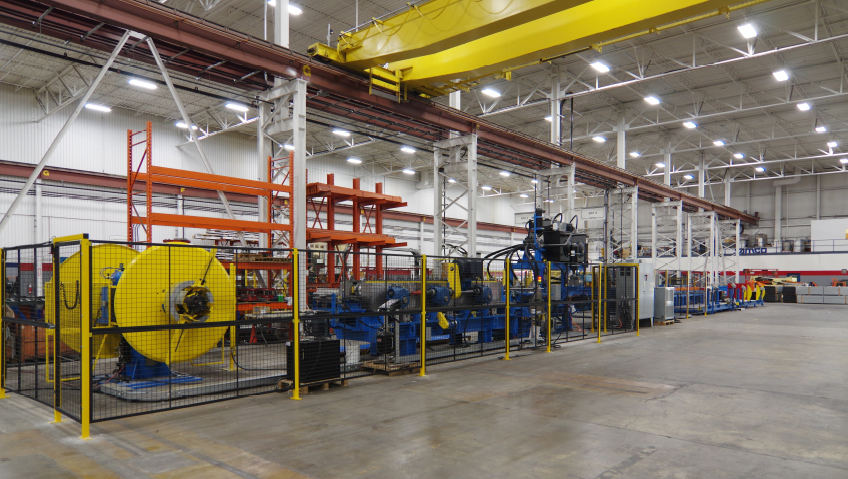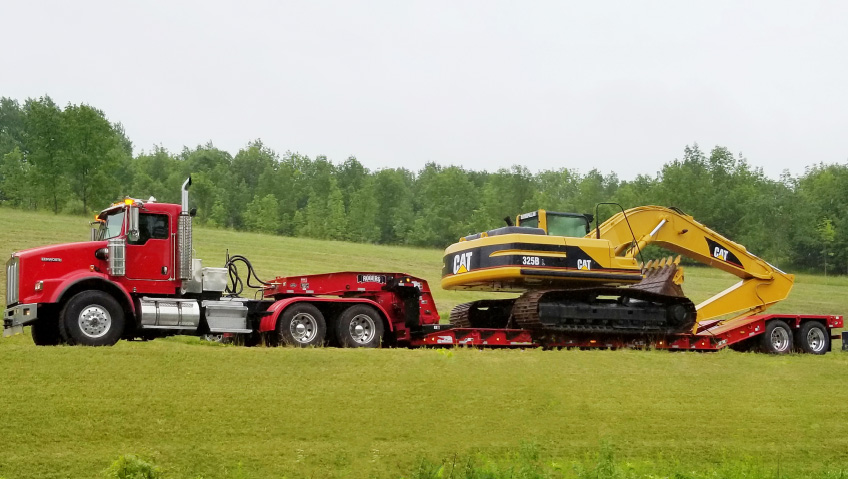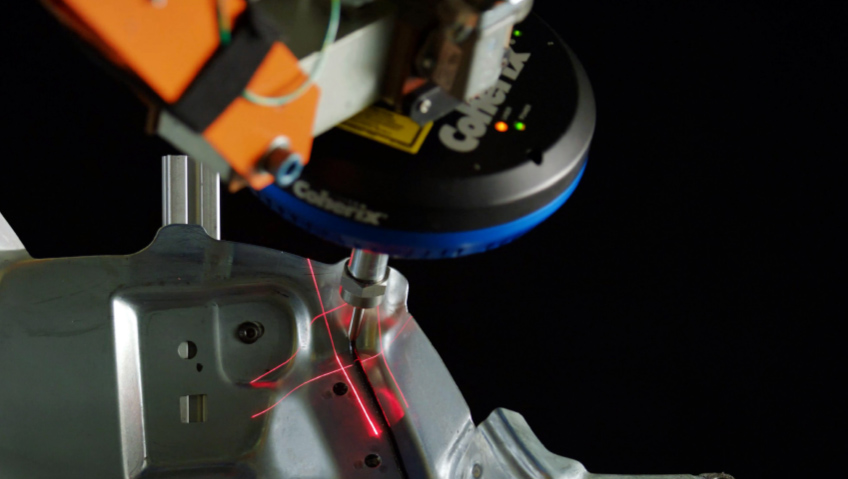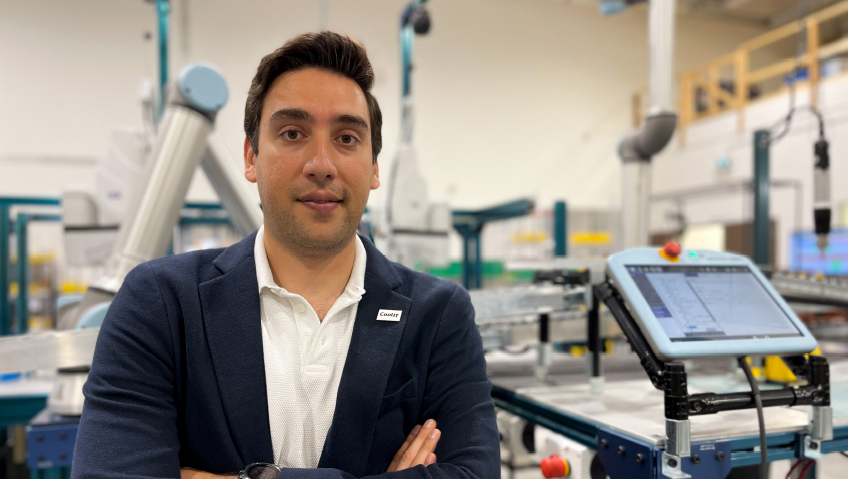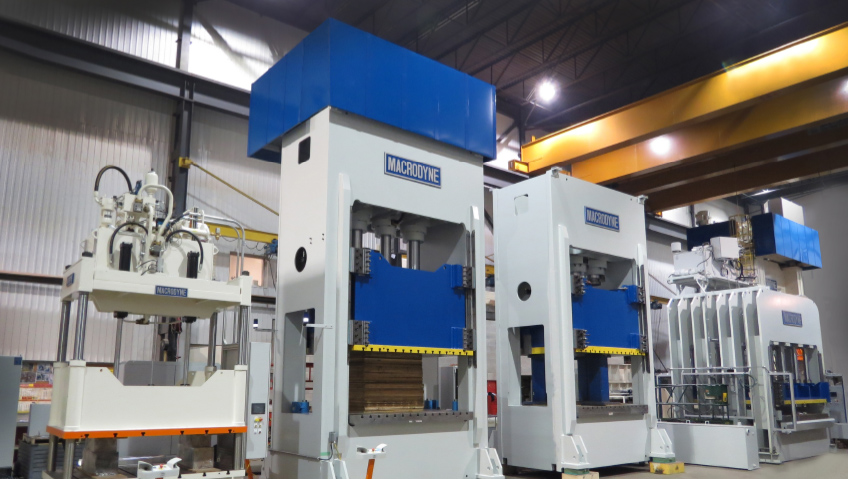What began as a one-man operation in 1972 has since flourished into a global enterprise with manufacturing locations in both Canada and India, an admirable feat that Samco Machinery Ltd. proudly embraces. A true family business, Samco was founded by Joe Repovs. The company is now run by his son, who carries on the goal of creating customized roll forming machines, value-added solutions and coil processing equipment, and providing innovative and unique services that meet and exceed specific customer needs.
“We’re a second generation business, and I’m the second generation,” says President and CEO Bob Repovs. “I’ve been here 25 years and over those years we’ve done a lot of amazing things. One of the major areas we really focus on is our people, and that’s never changed.”
In fact, Samco’s motto is ‘People. Products. Passion.,’ a maxim that embodies the company’s overriding principles in conjunction with its Patriot Values, an acronym for passion, accountability, trust, respect, innovation, open communication and teamwork, all essential to its culture, adds Repovs.
“Those are our Rules of Engagement, how we operate and make things happen throughout the company,” he says.
With manufacturing facilities built to simulate the plant of any customer, along with various adaptations, expansions and modernizations over the years, Samco produces the highest quality roll forming equipment, with its main design and manufacturing hub housed in its 164,000-square-foot Canadian facility. Here, equipment is designed and built for a variety of industries including construction, automotive, racking and shelving, garage door, and HVAC, going from a coil or a piece of sheet metal to a finished product through a series of multiple operations including in-line punching, bossing, and welding.
Vertically integrated across one location for those diverse industries, Samco has all the necessary ingredients including Wire EDMs, milling machines, cylindrical grinders, and a CNC Machining Center. The company’s impressive Tool Room assembly also assists with fabrication of roll forming lines and helps the design department.
“In the old days, the machines ran slower, with roll formers running at 50 feet per minute,” says Jaswinder Bhatti, Vice President, Applications Engineering. “It was a lot easier to handle those manually. As time passed, those machines ran faster and now we’re running machines up to 400 or 500 feet per minute. Now humans cannot deal with the way the machine processes the material.”
Due to both progress and the onset of COVID, designing material handling systems has become even more challenging,” he explains.
“Due to COVID, people couldn’t be close to each other, but sometimes you had to put two or three or four people together in order to work with the incoming and outgoing material,” says Bhatti. “Now we need to come up with something where you don’t need any human interaction.”
Employee shortages have also played a role, in part due to COVID. When you have machines running but no employees at the end to handle products, automation becomes even more vital.
“If you don’t have automation and employees may not be able to show up, the machine works for nothing because you can’t produce anything,” Bhatti says. “Material handling automation has been a big accomplishment any company can have. It’s never-ending because technology keeps changing.”
Along with advanced automation, Samco is also proud of its efficient project management system. “Once the project has launched, each of our projects is divided into different stages, starting at M1 and going all the way to M13,” says Dhruv Pandit, Sales & Marketing Director. “There’s a specific project manager managing each project, so if a customer has any questions or concerns they want to understand about where the project is, they have one go-to person.”
M1 and M2 involve understanding the requirements for the customer and for the launch, which happens at M3. “M4 is an important stage for us,” says Pandit. “This is where the engineering team at Samco talk to the engineering team of the customer’s to try and understand exactly what their actual requirements are.”
Essentially, Samco strives to maintain open communication between the company and its customers, gathering requirements initially as a sales team and talking to managers and higher-ups in the company before proposing a solution. Often, Pandit says, there’s a disconnect between what management wants and what the company requirements are.
“Our project management system gives us the opportunity to talk to the people who would actually be using the machine,” he says. “We bring them into the conversation and that’s how we work with them to try to understand.”
This could be something as simple as how the factory isn’t tall enough to accommodate a machine, or in the case of a material handling solution, a pillar somewhere in the facility could impede how Samco is designing the machine, which management may not be aware of.
“When we talk to the facility staff, engineers and floor manager, that’s when those challenges come to us,” says Pandit. “We learn about those challenges, and our engineering team sits down with the customer.”
Some customers will come to the team with an established scope and know exactly what they’re looking for, adds Bhatti, and then Samco will design the machine accordingly. “Other customers come to us with challenges they have. They’ll say, ‘that’s what we’re doing right now but it’s not working. We’d like to do better than this, and how can you guys help us create the scope for us?’”
Samco interacts with a customer in the initial stages, addressing challenges and issues and ultimately creating a solution.
“It could be a challenge that could even come three or four years down the line,” adds Pandit. “Sometimes we get customers that come back to us and say, ‘we have this machine that used to produce this product, but there’s another product coming to market which is in a similar family of products, but it has some variances.’” Samco then goes back to what they have designed to see how they can accommodate that new family of products, providing tooling or other changes.
All three agree the primary objective they’re aiming for is open communication, ensuring the customer talks to them and they talk to the customer to understand what they need and then provide them with what they need. “Sometimes it’s that conversation that helps us all understand,” says Pandit.
Aside from that challenge, Samco’s biggest hurdle over the past few years has been the supply chain, and managing that by learning to adapt, going virtual, and making positive changes.
“If customers are far away, now we do more Zoom or Teams calls when we present things,” says Repovs. “We do virtual tours with our clients. We’re more creative. We use technology better as a result of COVID because of that learning process.”
Labour has been another ongoing challenge in terms of not only a shortage of workers, but employees retiring. This has meant going into schools to promote what Samco does.
“We now have a young generation, we have new apprentices and eager beavers learning the business,” says Repovs. “Then we have some of the older generation class that are very knowledgeable and have years and years of experience, like Mr. Jaswinder Bhatti here, sharing the knowledge to the younger generation.”
It’s a really exciting time, he adds, making the effort to go after the colleges and universities and getting out to high schools.
“It’s about selling yourself and your company and showing them some of the technology we’re building, which is pretty amazing,” Repovs says. “We have some successes and you just work hard at it. When they come on board, you also have to know how to onboard them. That’s another whole process because they don’t come with a lot of experience, obviously, literally out of school.”
“Each department has its own training centre, and that’s part of a requirement that we have, where everybody’s training each other,” says Pandit.
Along with bringing in a younger generation, Samco looks to continue roll forming, along with its innovative and unique approach to building machinery while also building up its fabrication division in an ongoing effort to be a “one-stop shop,” says Bhatti.
“A customer comes to us with some low volume, pays for the tooling, and we do production for him, and eventually if business picks up and he can afford the machine, he buys the machine from us,” he says. “We have vertically integrated, and will eventually come up with something else in the future to make our offering even more unique.”
“We’ve also been here for 50 years so that itself is a great achievement,” says Pandit. “We’re looking forward to another 50 years, but also our 10,000th order is coming up soon, something we’re all working toward.”
Pandit also emphasizes that Repovs makes a point of walking the facility floor every morning. “Bob knows what’s going on, what’s coming in, what’s new, and at the same time he knows personally most of the people by name,” he says. “The fact that he goes around and walks with them adds a personal touch to every single employee. It makes them feel good to work in a company where they know the CEO. To me, that’s an important aspect which brings us back to the very first point: people.”
People have been at the core of this company for the past 50 years and they still are, Pandit stresses. It’s what really sets Samco apart because it makes people personally invested in the company.
“We’ve got our equipment in 35 countries and we’re proud to say that we have 42 different nationalities working within our operation here in Toronto,” says Repovs. “We have a wall of flags on our wall in the building that really represents our people and our diversity. It’s something we’re really proud of alongside our values and who we are as a business.”

